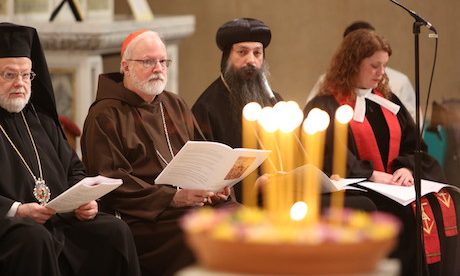Five hundred years ago, Martin Luther, a German monk, initiated a split in Christianity that came to be known as the Protestant Reformation.
After the Reformation, deep divisions between Protestants and Catholics contributed to wars, hostility and violence in Europe and America.
For centuries, each side denounced the other and sought to convert its followers.
Then, in the early 1900s, ambitious Protestants in the U.S. attempted the unthinkable.
Building on ideas circulating in Europe, they took charge of an effort to negotiate the reunion of Christianity.
They failed, of course. Strange as it might now seem, their effort is nevertheless informative. Here’s why.
How it started
By 1900, atheists and agnostics were becoming more prominent in the U.S. Anxious Protestant religious leaders started to argue in favor of a united Christianity to stop the spread of these ideas.
Noted theologian and fellow at Yale Newman Smyth complained at the time about religion’s “lost authority” in family, community and intellectual life.
He declared, “a Christianity divided in its own house against itself” could not survive.
In response, in 1910, a very small but highly influential group comprising theologians including Smyth, as well as ministers of prestigious churches and noted business professionals, committed themselves to “Christian unity.”
For this group, unity meant more than cooperation or mutual understanding. It meant the actual reunion of Protestantism and Catholicism.
The influential WWI chaplain
Their most significant member was Charles Brent, an Episcopalian bishop.
In the early 1900s, Brent had been a missionary to the Philippines.
While there, he became friends with John Pershing, the army officer overseeing much of the territory acquired by the U.S. This friendship would propel the bishop to greater prominence.
When the United States entered World War I in 1917, Pershing took command of U.S. forces in Europe. He persuaded Brent to organize and lead the newly established corps of army chaplains.
As he built up the ranks of chaplains, Brent showed his own commitment to Christian unity. Though a Protestant, he made a Catholic priest his second in command and encouraged recruitment of Catholic chaplains. Continue reading
Sources
- The Conversation, article by David Mislin, Assistant Professor, Intellectual Heritage Program, Temple University, Pennsylvania
- Image: The Catholic Catalogue
News category: Features.




